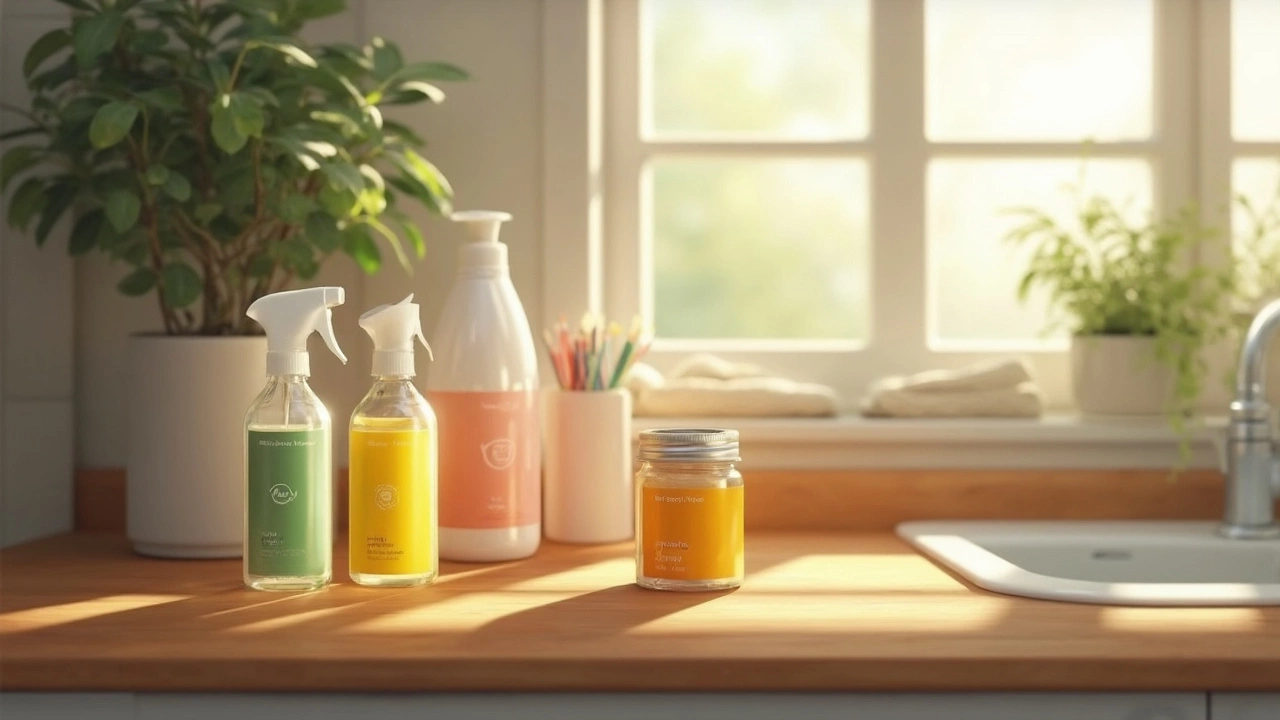Sustainable Products for a Cleaner, Greener Home
Going green doesn’t mean you have to sacrifice clean surfaces. With a few smart choices, you can pick products that work well and stay kind to the environment. Below you’ll find simple ways to spot truly sustainable cleaners and a short list of everyday items that fit the bill.
What Makes a Cleaner Sustainable?
First off, look at the ingredient list. A sustainable cleaner uses plant‑based surfactants, biodegradable compounds, and avoids harsh chemicals like chlorine, phosphates, or synthetic fragrances. These ingredients break down quickly in water and don’t linger in soil.
Next, consider packaging. Recyclable bottles, refill stations, or bulk options cut down on plastic waste. Some brands even use glass or post‑consumer recycled plastic. Choosing a refill system can save up to 30 % of packaging material over a year.
Third, think about the product’s lifecycle. A cleaner that’s concentrated requires less water to ship, which lowers carbon emissions. Look for labels that say “concentrated,” “refill,” or “low‑transport.”
Top Eco‑Friendly Products You Can Use Today
Here are a few reliable options you’ll find in most UK stores or online. All of them meet the three criteria above and work well for common cleaning jobs.
Vinegar & Baking Soda – The classic duo stays cheap, non‑toxic, and effective for limescale, grime, and deodorising. Mix equal parts water and white vinegar for windows, floors, or bathrooms. Sprinkle baking soda on stains, let it fizz, then wipe clean.
Plant‑Based All‑Purpose Sprays – Brands like Ecover, Method, and Ecozone offer sprays with citrus or olive‑oil bases. They cut grease on countertops, remove soap scum in showers, and leave a fresh scent without synthetic chemicals.
Microfiber Cloths – Swap disposable wipes for reusable microfiber. The tiny fibers trap dust and dirt, so you often need only water to get a streak‑free shine. Wash them in warm water, and they’ll last for years.
Natural Dish Soap – Look for soap made from coconut or palm oil that’s free of phosphates. It rinses well, removes food residue, and is safe for hands even during long dish‑washing sessions.
Biodegradable Laundry Detergent – Powder or liquid options that break down in waterways keep fish and plants safe. Many come in cardboard boxes or refill hubs, cutting plastic use.
When you try a new product, do a quick spot test. Apply a little on an inconspicuous area and wait a minute. If the surface stays intact, you’re good to go.
Finally, remember that less is often more. A well‑ventilated home, regular dusting, and a tidy routine reduce the need for heavy cleaning chemicals. By keeping clutter down, you’ll spend less time scrubbing and more time enjoying a fresh, green space.
Switching to sustainable products is a step‑by‑step process. Start with one item—maybe a refillable all‑purpose spray—and build from there. Your home will stay spotless, and you’ll feel better knowing you’re protecting the planet one bottle at a time.

Most Eco-Friendly Cleaning Brands You Should Know
Discover the top eco-friendly cleaning brands that are making a difference with sustainable and non-toxic products. Learn practical tips for choosing green brands and understand why it's crucial for your health and the planet. Explore how these companies are innovating with biodegradable packaging and conscious formulas. Get ready to transform your cleaning routine with brands that truly care about the environment.
Read More